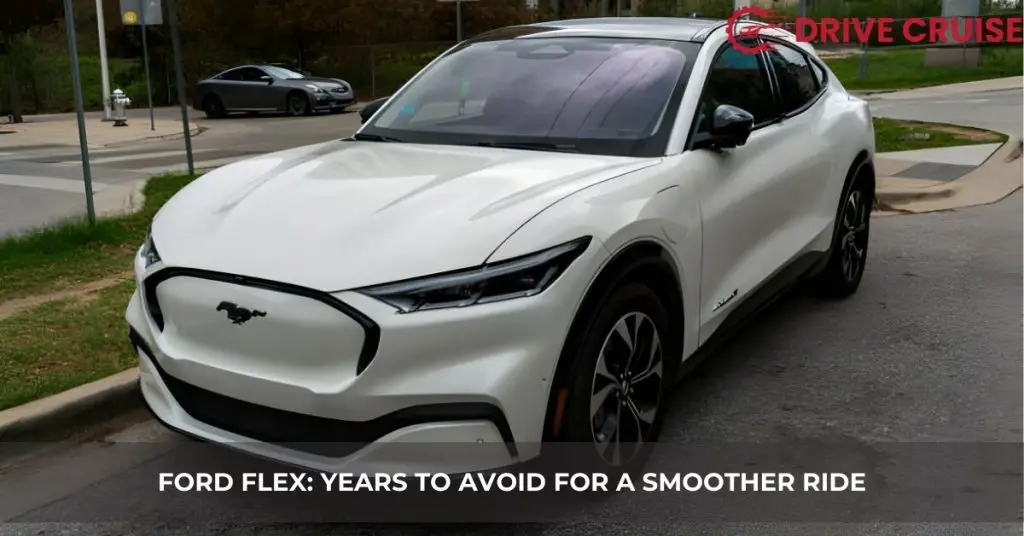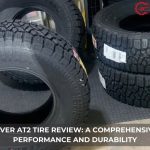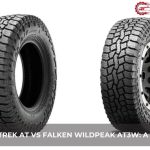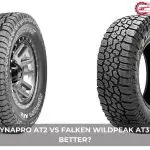When we’re in the market for a used car, we all want to make sure we’re getting the best bang for our buck, especially when it comes to reliability and value. That’s why it’s crucial to do our homework before making a decision. The Ford Flex, with its unique styling and spacious interior, has caught the eye of many of us looking for a family-friendly vehicle. However, not all years of this model were created equal.
We’ve taken a closer look at the Ford Flex’s history to pinpoint which years might be best to steer clear of. While the Flex has many strengths, like any vehicle, it has its fair share of weaknesses in certain model years. Our goal is to help you navigate through the sea of options and guide you toward making a choice that won’t leave you regretting your purchase down the line. So, let’s dive in and explore which Ford Flex years might be best to avoid.
Ford Flex Overview
After discussing the pivotal need for research before diving into the used car market, it’s essential to zoom into the specifics of the Ford Flex, a model that’s caught the eye of many for its distinctive features. The Ford Flex stands out for its unconventional design, marrying the space and comfort of an SUV with the aesthetics of a wagon. This vehicle prides itself on offering a commodious interior, making it a top choice for families or groups requiring generous seating and cargo space.
Introduced in 2008, the Ford Flex has undergone several updates to refine its performance and interior features, ensuring drivers enjoy a blend of practicality and style. The vehicle offers a range of engines, including a robust 3.5-liter V6 engine in its earlier models, and a more powerful EcoBoost V6 option in later years, catering to those seeking a bit more vigor under the hood.
Safety hasn’t taken a backseat either. Throughout its production years, the Flex has been equipped with advanced safety features, including airbags, anti-lock brakes, and electronic stability control, with later models adopting more sophisticated technologies like blind-spot monitoring and adaptive cruise control.
One of the Flex’s major selling points is its ride quality. Drivers and passengers alike commend the vehicle for its smooth, comfortable ride, attributing this to the vehicle’s design and suspension system. Whether it’s a brief city drive or a long interstate journey, the Flex proves to be a reliable companion.
Fuel efficiency is another aspect where the Ford Flex makes its mark. Despite its size and engine capabilities, it offers reasonable fuel economy, particularly in models equipped with the EcoBoost engine, balancing power with efficiency.
As we delve deeper into which years of the Ford Flex to consider and which to avoid, it’s clear that this vehicle offers a unique package. Its blend of style, space, and safety makes it an appealing choice, yet, like any vehicle, some years perform better than others in terms of reliability and satisfaction.
Common Issues in Ford Flex Models
In diving deeper into the Ford Flex’s reliability, we’ve identified several common issues across various model years that potential buyers should be aware of. It’s critical to understand these problems to make an informed purchase decision.
Engine Problems
First on our list is engine problems, notably with the 2013 Ford Flex. Owners have reported issues such as loss of power, rough idling, and even complete engine failure. These problems often result in costly repairs and may occur without significant warning, posing a considerable inconvenience to owners.
Electrical Issues
Electrical issues are another major concern, especially in the 2009 and 2011 models. Problems range from faulty interior lighting to more severe issues like the vehicle’s electrical system shutting down while driving. Such unpredictability can affect the car’s overall reliability and safety on the road.
Cooling System Failures
Cooling system failures have been a notable problem, particularly in the 2010 Ford Flex. This issue can lead to overheating, which, if not addressed promptly, may cause significant engine damage. Ensuring the cooling system is in good working order is essential for the vehicle’s performance and longevity.
Transmission Concerns
Lastly, transmission concerns have surfaced, especially in the 2009 and 2013 models. Symptoms include erratic shifting, delayed acceleration, and in some instances, complete transmission failure. Given the complexity and cost of transmission repairs, this is a critical aspect to inspect before purchasing.
Acknowledging these common issues in Ford Flex models is crucial for buyers. By being informed, one can anticipate potential costs and maintenance needs, thereby ensuring a more satisfying and dependable vehicle ownership experience.
Ford Flex Years to Avoid
Building on our exploration of the Ford Flex’s reliability and common model issues, identifying specific years to avoid is paramount for prospective buyers aiming for a dependable vehicle. We’ve analyzed the data and customer feedback to pinpoint the years that might give you more trouble than joy. Given our findings from the reported engine, electrical, cooling system, and transmission issues, here are the Ford Flex years to steer clear of:
- 2009 Ford Flex: Marks the debut year of the Flex. Typically, initial models of any vehicle line might encounter some teething problems. The 2009 Flex is not an exception, with notable electrical and transmission issues that could lead to unexpected repair bills.
- 2010 Ford Flex: Although Ford made improvements over the 2009 model, the 2010 Flex is reported to have cooling system failures. These issues could potentially lead to engine overheating and require costly repairs.
- 2011 Ford Flex: Electrical issues persist in this year’s model, similar to what was found in the 2009 and 2010 models. Owners have reported problems that can affect the vehicle’s overall reliability and driving experience.
- 2013 Ford Flex: This year saw a notable spike in engine problems, alongside the recurrence of transmission issues similar to those of earlier models. The engine concerns, particularly, are worrying as they could compromise the vehicle’s performance and safety.
While these years stand out as the ones to avoid, it’s important to note that individual experiences can vary. Proper maintenance and timely repairs can mitigate some issues, but if you’re aiming for a hassle-free ownership experience, considering models outside of these years might be a wiser choice. The Ford Flex has seen significant improvements in reliability and customer satisfaction in other years, highlighting the importance of choosing wisely for a dependable and enjoyable vehicle.
Safer Alternatives Within Ford Flex Lineup
After discussing the Ford Flex’s unique aspects and pinpointing the years to avoid, it’s essential to highlight the safer alternatives within the same lineup. Our focus shifts to models that have shown improved reliability, fewer issues, and generally have better reviews from both experts and owners. These models stand out as better choices for those interested in the spacious and distinctive Ford Flex but want to ensure a smoother ownership experience.
- 2014 and Newer Models: Starting with the 2014 model year, the Ford Flex began to show significant improvements in terms of reliability. Feedback from owners and experts suggests that many of the issues present in earlier models were addressed by Ford, making these later models more attractive for potential buyers.
- 2016 Model Year: Specifically, the 2016 Ford Flex is often highlighted for its enhanced safety features, including the addition of the SYNC 3 infotainment system, which not only offers superior connectivity and entertainment options but also improves on the user interface and responsiveness compared to the older MyFord Touch system. This year also benefits from a minor facelift, further refining its exterior and interior design.
- 2018 and 2019 Models: As the latest models before the discontinuation of the Flex in 2019, these years represent the pinnacle of the line, incorporating all the refinements and updates made over the years. They come equipped with the most advanced safety features available in the Flex series, including adaptive cruise control, blind-spot monitoring, and an improved overall safety rating from third-party evaluators.
For those considering the Ford Flex, focusing on these recommended model years can lead to a more satisfying and worry-free ownership experience. Each of these safer alternatives offers the unique styling and spacious interior that fans of the Flex love, but with the added reassurance of better performance and safety enhancements.
Buying Tips for Used Ford Flex
Navigating the used car market for a Ford Flex requires a bit of know-how, especially after identifying specific years to avoid due to their recurring issues. Reflecting on our earlier discussion, we’ve pinpointed models from 2014 onwards as more reliable choices, with the 2016, 2018, and 2019 models standing out for their safety features and overall refinements. Here are key tips to secure the best deal and the right vehicle.
- Check Vehicle History: Always request a comprehensive vehicle history report. This document reveals crucial information like past accidents, service records, and whether the car has a clean title. Such a report can help you avoid vehicles with hidden issues.
- Conduct a Thorough Inspection: Before making a purchase, inspect the vehicle thoroughly or, better yet, have it checked by a professional mechanic. Pay attention to areas previously mentioned as problematic in specific years, like the engine, cooling system, and transmission.
- Verify Recalls and Services: Confirm that any recalls, particularly those affecting the avoided models, have been addressed. Also, ensure that regular maintenance has been performed, keeping the Flex in optimum condition.
- Test Drive: A test drive offers insights into the Flex’s performance that you can’t get from specs alone. Monitor the transmission’s smoothness, engine performance, and how the electronics operate during your drive.
- Negotiate Based on Findings: If you discover any issues during the inspection or test drive, use them as leverage in your negotiations. Sellers might be willing to reduce the price if they’re made aware of specific concerns you have about the vehicle.
- Seek Models with Warranty: If possible, look for a used Ford Flex still under warranty. Not only does this provide peace of mind, but it also indicates that the vehicle is relatively new and likely in better condition.
By following these tips, we can navigate the used Ford Flex market more confidently, securing a vehicle that meets our needs without the hassle of dealing with hidden problems. Opting for models from 2014 onwards further minimizes the risk, aligning with our pursuit of a reliable, stylish, and spacious vehicle.
Conclusion
We’ve walked you through the highs and lows of the Ford Flex, pinpointing those years that might give you more trouble than joy. Steering clear of the 2009, 2010, 2011, and 2013 models can save you from a world of issues. But don’t let that dishearten you! The Ford Flex has plenty to offer, especially from 2014 onwards. With the 2016, 2018, and 2019 models, you’re looking at a ride that’s not only reliable but packed with safety features and refinements. Remember, a little diligence goes a long way. By following our buying tips, you’re setting yourself up for a smoother journey to finding the perfect Ford Flex. Happy hunting!
Related Posts:







